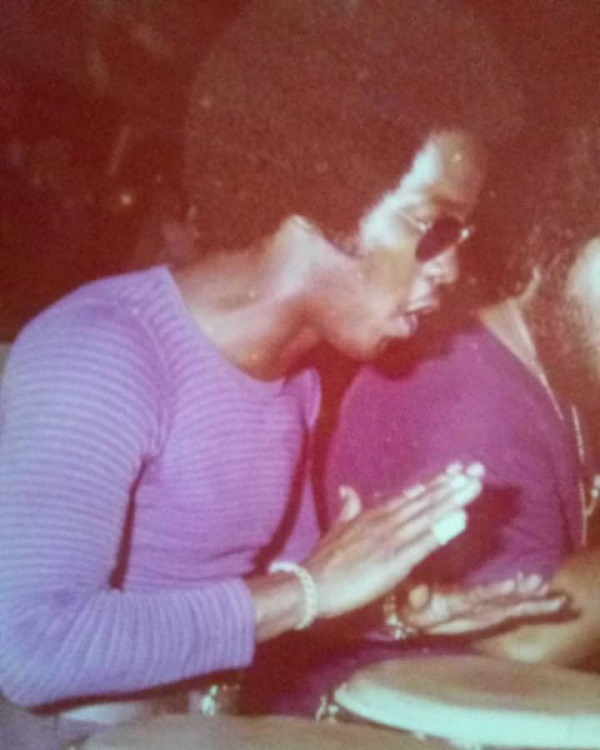The most recent production of the Bailable Víspera de Reyes, which was instituted in 1987 by the timbalero and band leader known in the salsa scene as Don Perignon, was quite an event. Thirty-eight years ago, ‘La Puertorriqueña’ was still known as ‘Compañeros y amigos’.

However, the dance that fulfills a promise made by Perignon to kings has continued to be celebrated beyond the names with which Perignon has identified his band over time.
Each year, the show brings with it a box of surprises. In addition to what is promised during the promotion, the salsa public that comes to the traditional gala knows that anything can happen there. This year, the stage showcased great artists in addition to the luxurious closing that gave us the night by way of El Caballero de la Salsa, Gilberto Santa Rosa performing the emblematic song by Johnny Ortiz, ‘Tu música popular’.

In this edition, held on January 5, 2025, the concert was started by the successor of the Perignon dynasty, also a percussionist, Pete Perignon; flanked by vocalists Ricardo Rodríguez in the more melodic songs and Julio López in the heavier numbers. López got the first turn at the microphone with ‘Azúcar pa’ un amarga’o’, followed by Rodríguez in the key of ‘Cuéntame tu historia’.
According to Pete himself, he invited Jorge Yadiel Santos to silence rumors regarding the singer’s departure from his orchestra. With the vocal power that characterizes him, the now soloist closed the presentation of the first orchestra of the night; performing ‘Baila’ and ‘Gotita caído en clave’.

The group led by Pete Perignon and his timbal offered a great performance with master musicians of the present generation. These were: Jean Carlos Camuñas on the tumbadoras, Carlos Pagán on the bongó, Reynaldo Burgos on the piano, Jorge Rivera on the bass; Víctor Ambert and Jahaziel García on the trumpets; Darnell Febres and César Javier Ayala on the trombones, and Víctor “Yuca” Maldonado on the baritone saxophone.
La Mulenze kept the crowd on the dance floor, with the first song of their repertoire being ‘La sala pa’l baile’, performed by Rafy Andino. The vocal front was completed by Rafy Cruz and Alex Ojeda. The bassist, director of the orchestra of eternal youth, Edwin Morales led his boys, as he affectionately refers to his musicians; Among them were Emanuel Navarro on the tumbadoras, Robert Watts on the timbal, Alberto Muriel on the bongo, Manolo Navarro on the piano, Carlos “Coamito” Martínez, Jr. and Abdel Rivera on the trumpets; in addition to Willie Torres Ortiz and Heity Morales Nogueras on the trombones. The golden touch was offered to those present during the interpretation of the song “Mala paga”, written by our Moncho Rivera, when the Venezuelan master musician and sonero Marcial Istúriz took on the task of accompanying Rafy Andino on the soneos, shortly after Rafy confessed to being a great admirer of one of the greatest exponents of the salsa sound in Venezuela.

Before starting his presentation, the star of the annual gala, Don Perignon marked and conducted the orchestra to play ‘Happy Birthday’ in honor of the evening’s host, also Z-93 announcer: Néstor Galán, “El Búho”. The timbalero conducted the orchestra, which was reinforced for the evening with guest musicians. The group in its Bailable Víspera de Reyes 2025 version was composed of: Charlie Padilla on the tumbadoras, Miguel Aponte on the bongó, Ángel Martínez on percussion (güiro), Luis Marín on the piano, Efraín Hernández on the bass; Cuto Soto, Gamalier González and Rafy Torres on the trombones; in addition to Pedro Marcano, Carlos “Coamito” Martínez, Jr., Ángel Segarra and Humberto Ramírez on the trumpets. For the vocal front, Perignon called on: Henry Santiago, Pedro Brull, Joe González, Pichie Pérez, Josué Rosado, Jerry Rivas, Rico Walker, Marcial Istúriz, Hermán Olivera and Gilberto Santa Rosa.

The repertoire took the followers of La Puertorriqueña on a historic tour that demonstrated the variety of songs and voices that come together in a salsa key with the cadence and flavor that Perignon manages to give to each project he leads. Joe González performed ‘Ciudad, ciudad’, Pedro Brull excelled singing ‘Represento’, Pichie Pérez was in charge of vocalizing ‘Como mangó’, Josué Rosado visited to sing ‘Cantándole al amor’, Jerry Rivas was in charge of ‘El pin pin’, Rico Walker shined with ‘Que vengan rumberos’, followed by Marcial Istúriz and a masterful interpretation of ‘La familia’ and Hermán Olivera with his spectacular ‘Ritmo Bembé’.

La Puertorriqueña was born in 1988 near the promise of Kings, which happens every January 5. The dance of January 5, 2025, which was held at the Sheraton in San Juan, Puerto Rico and was dedicated to trombonist Toñito Vázquez (RIP) showed that the promise of Reyes by Don Perignon -who is the leader of a generation of musicians- established more than three decades ago, remains valid. The participation of El Caballero de la Salsa recreated the beginning of his career, together with his first musical director: Don Perignon. That brotherhood between Gilberto and Perín, like the promise of Reyes, also remains valid. For our part, we will continue in salsa thanks to the call of the leader of La Puertorriqueña.
Also Read: Don Perignon and La Puertorriqueña are prides of Puerto Rico














